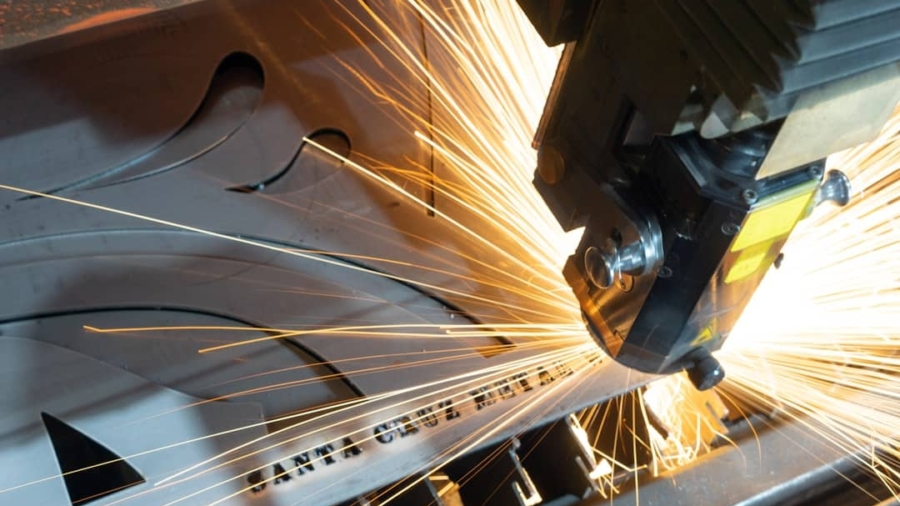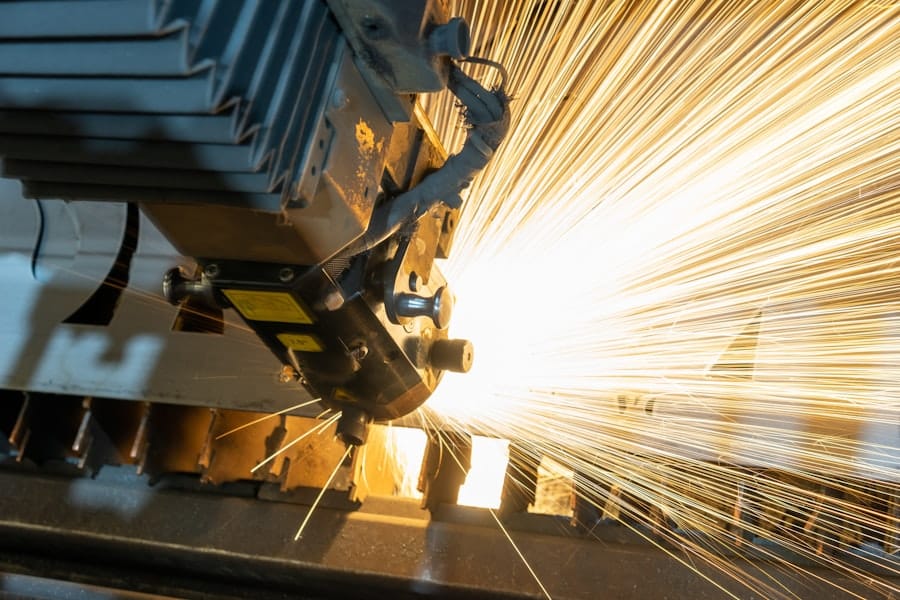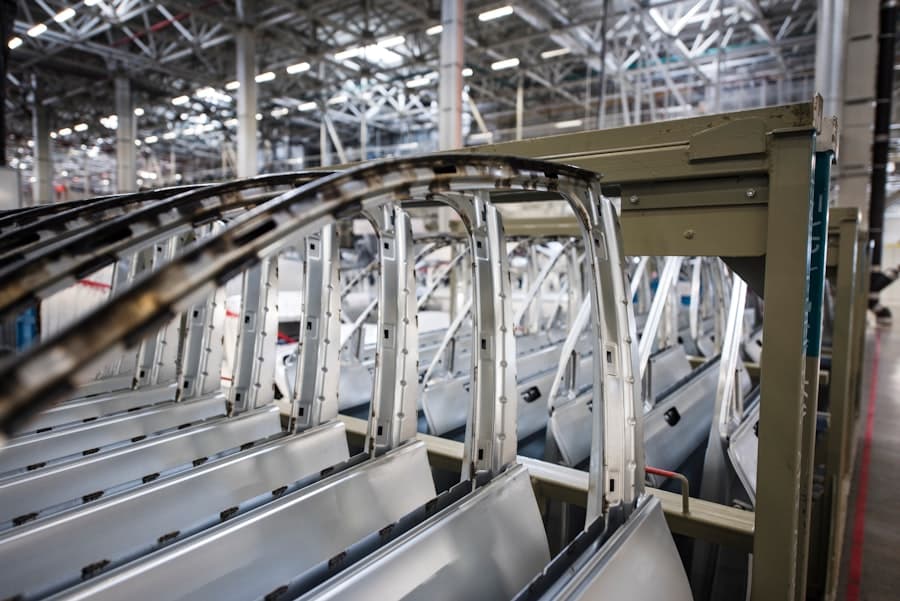The integration of artificial intelligence (AI) into industrial manufacturing represents a transformative shift in how products are designed, produced, and delivered. As industries face increasing pressure to enhance efficiency, reduce costs, and minimize environmental impact, AI emerges as a pivotal technology that can address these challenges. By leveraging vast amounts of data generated throughout the manufacturing process, AI systems can optimize operations, improve decision-making, and foster innovation.
This technological evolution is not merely about automation; it encompasses a holistic approach to rethinking manufacturing paradigms, enabling companies to achieve sustainable growth while meeting the demands of a rapidly changing market. AI’s role in industrial manufacturing extends beyond mere operational enhancements. It encompasses a wide array of applications, from predictive analytics that forecast equipment failures to intelligent robotics that streamline assembly lines.
The convergence of AI with other advanced technologies, such as the Internet of Things (IoT) and big data analytics, creates a synergistic effect that amplifies the potential benefits. As manufacturers increasingly adopt AI-driven solutions, they are not only improving their bottom line but also contributing to broader sustainability goals by reducing waste, conserving energy, and minimizing emissions. This article delves into various facets of AI’s impact on industrial manufacturing, highlighting its potential to drive energy efficiency, predictive maintenance, supply chain optimization, waste reduction, resource allocation, and emissions control.
Key Takeaways
- AI is revolutionizing industrial manufacturing by improving energy efficiency, predictive maintenance, supply chain management, waste reduction, resource allocation, and emissions monitoring.
- AI-driven energy efficiency in manufacturing processes helps reduce energy consumption and lower carbon emissions, leading to more sustainable operations.
- AI-enabled predictive maintenance uses data and machine learning to anticipate equipment failures, reducing downtime and extending the lifespan of machinery for sustainable operations.
- AI-optimized supply chain management utilizes advanced algorithms to minimize emissions and waste, leading to more environmentally friendly and efficient operations.
- AI-enhanced waste reduction and recycling in manufacturing leverages technology to minimize waste and maximize recycling, contributing to more sustainable production processes.
AI-Driven Energy Efficiency in Manufacturing Processes
Optimizing Machine Operation Times
By optimizing machine operation times and reducing idle periods, manufacturers can significantly lower their energy consumption without compromising productivity. Moreover, AI can facilitate the implementation of smart energy management systems that dynamically adjust energy usage based on demand fluctuations. These systems utilize data from sensors embedded in machinery and production lines to monitor energy consumption continuously.
Real-time Energy Monitoring
For example, a factory might employ AI algorithms to analyze data from its HVAC systems, lighting, and machinery to optimize energy use throughout the facility. By predicting peak demand periods and adjusting energy consumption accordingly, manufacturers can not only reduce costs but also contribute to a more sustainable energy landscape by minimizing reliance on fossil fuels during high-demand periods.
Towards a Sustainable Energy Future
The implementation of AI-driven energy management systems can have a significant impact on the environment. By reducing energy consumption and reliance on fossil fuels, manufacturers can contribute to a more sustainable energy landscape. As the industry continues to adopt AI-driven solutions, we can expect to see a significant reduction in energy consumption and a shift towards a more environmentally friendly manufacturing process.
AI-Enabled Predictive Maintenance for Sustainable Operations
Predictive maintenance is another area where AI is making significant strides in enhancing sustainability within industrial manufacturing. Traditional maintenance practices often rely on scheduled inspections or reactive measures following equipment failures, leading to unplanned downtime and increased operational costs. In contrast, AI-enabled predictive maintenance leverages data analytics to forecast when equipment is likely to fail based on historical performance data and real-time monitoring.
This proactive approach allows manufacturers to address potential issues before they escalate into costly breakdowns. For example, consider a manufacturing plant that produces automotive components. By implementing AI-driven predictive maintenance solutions, the plant can continuously monitor the health of its machinery using sensors that track vibrations, temperature, and other critical parameters.
Machine learning algorithms analyze this data to identify patterns indicative of wear or impending failure. As a result, maintenance teams can schedule repairs during planned downtimes rather than facing unexpected shutdowns that disrupt production schedules.
AI-Optimized Supply Chain Management for Reduced Emissions
Supply chain management is a complex web of activities that significantly impacts a manufacturer’s carbon footprint. AI technologies are increasingly being employed to optimize supply chain operations, leading to reduced emissions and enhanced sustainability. By analyzing vast datasets encompassing supplier performance, transportation logistics, and inventory levels, AI can identify inefficiencies and recommend strategies for improvement.
For instance, machine learning algorithms can optimize routing for delivery trucks based on real-time traffic data and weather conditions, minimizing fuel consumption and emissions during transportation. Additionally, AI can facilitate better demand forecasting by analyzing market trends and consumer behavior patterns. Accurate demand predictions enable manufacturers to align production schedules with actual market needs, reducing excess inventory and minimizing waste.
For example, a consumer electronics manufacturer might use AI to analyze sales data from various regions to predict demand for specific products during peak seasons. By aligning production with anticipated demand, the company can avoid overproduction and the associated environmental impact of excess goods that may ultimately end up in landfills.
AI-Enhanced Waste Reduction and Recycling in Manufacturing
Waste reduction is a critical component of sustainable manufacturing practices, and AI technologies are playing an essential role in this endeavor. By employing advanced analytics and machine learning algorithms, manufacturers can gain insights into their production processes that help identify areas where waste is generated. For instance, AI can analyze production line data to pinpoint inefficiencies in material usage or identify defects early in the manufacturing process.
This allows companies to make informed adjustments that minimize scrap material and reduce overall waste. Moreover, AI can enhance recycling efforts within manufacturing facilities by optimizing the sorting and processing of recyclable materials. For example, computer vision systems powered by AI can be deployed to identify different types of materials on production lines or in waste streams.
These systems can automatically sort materials for recycling based on their composition, ensuring that valuable resources are recovered rather than discarded. This not only contributes to a circular economy but also reduces the environmental impact associated with raw material extraction and processing.
AI-Powered Resource Allocation for Sustainable Production
Optimizing Material Usage
AI algorithms can analyze production schedules alongside resource availability to ensure that materials are allocated efficiently across different production lines. This minimizes waste associated with over-ordering or underutilizing resources.
Enhancing Labor Allocation
In addition to optimizing material usage, AI can enhance labor allocation by analyzing workforce productivity data. By identifying patterns in employee performance and machine utilization rates, manufacturers can make informed decisions about staffing levels and shift schedules.
Improving Operational Efficiency and Employee Satisfaction
For example, an automotive manufacturer might use AI to analyze historical production data to determine the optimal number of workers needed during peak production times versus slower periods. This not only improves operational efficiency but also contributes to employee satisfaction by ensuring that labor resources are utilized effectively without overburdening staff.
AI-Integrated Emissions Monitoring and Control in Manufacturing
As regulatory pressures around emissions intensify globally, manufacturers are increasingly turning to AI-integrated solutions for emissions monitoring and control. These systems leverage real-time data from sensors installed throughout manufacturing facilities to track emissions levels continuously. By employing machine learning algorithms to analyze this data, manufacturers can identify trends and anomalies that may indicate compliance issues or inefficiencies in their processes.
For instance, an oil refinery might implement an AI-driven emissions monitoring system that analyzes data from various sources—such as flue gas sensors and operational parameters—to provide insights into emissions levels in real time. If emissions exceed regulatory thresholds or deviate from expected patterns, the system can alert operators immediately, allowing them to take corrective action before significant violations occur. This proactive approach not only helps manufacturers comply with environmental regulations but also fosters a culture of accountability around emissions management.
The Future of AI in Sustainable Industrial Manufacturing
The future of industrial manufacturing is poised for significant transformation through the continued integration of artificial intelligence technologies. As manufacturers strive for greater sustainability amidst growing environmental concerns and regulatory pressures, AI offers powerful tools for optimizing processes across various dimensions—from energy efficiency and predictive maintenance to supply chain management and waste reduction. The ability of AI to analyze vast datasets in real time enables manufacturers to make informed decisions that enhance operational efficiency while minimizing their environmental footprint.
As industries embrace these advancements, the potential for innovation will expand further. The ongoing development of AI technologies will likely lead to even more sophisticated applications that address emerging challenges in manufacturing sustainability. By harnessing the power of AI, manufacturers can not only improve their competitiveness but also contribute meaningfully to global sustainability efforts—ultimately paving the way for a more responsible and efficient industrial landscape in the years ahead.
In a related article discussing the best software for creating training videos, it highlights the importance of utilizing technology to streamline processes and reduce waste in various industries.
To learn more about how technology is revolutionizing different sectors, check out the article here.
FAQs
What is AI?
AI stands for artificial intelligence, which refers to the simulation of human intelligence in machines that are programmed to think and act like humans.
How is AI reducing the carbon footprint of industrial manufacturing?
AI is reducing the carbon footprint of industrial manufacturing by optimizing energy usage, improving production processes, and reducing waste through predictive maintenance and real-time monitoring.
What are some specific ways AI is being used to reduce carbon footprint in industrial manufacturing?
Some specific ways AI is being used include optimizing energy consumption, reducing material waste, improving supply chain efficiency, and enabling predictive maintenance to reduce downtime and energy usage.
What are the benefits of using AI to reduce carbon footprint in industrial manufacturing?
The benefits of using AI include lower energy costs, reduced waste, improved efficiency, and a smaller environmental impact, ultimately leading to a more sustainable and environmentally friendly manufacturing process.
Are there any challenges or limitations to using AI to reduce carbon footprint in industrial manufacturing?
Challenges and limitations include the initial investment in AI technology, the need for skilled personnel to implement and manage AI systems, and potential concerns about data privacy and security.



